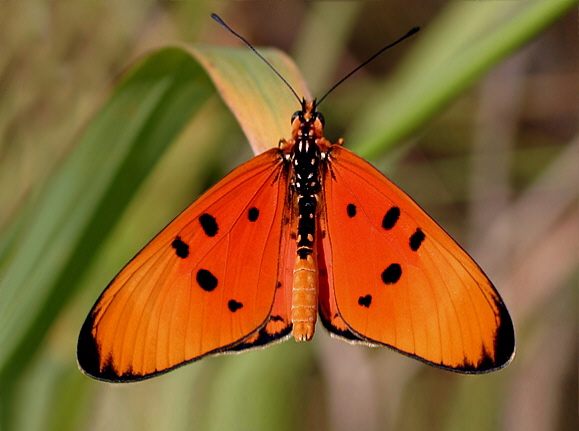
Introduction
There are 228 Acraea species, of which 223 are Afrotropical in distribution. The majority are found in the forests and savannahs of East Africa, while about 60 are found in West Africa. Beyond Africa a further 5 species occur in the Oriental region, and another is found in Australia / New Guinea. In the neotropical region there are 50 additional species, but these are normally placed in the genera Actinote, Altinote and Abananote due to differences in venation and genitalia.
All Acraea species have elongate forewings and rounded hindwings. The wings are thinly scaled and in many species are semi-transparent. The scales wear off very easily so that insects more than 4 or 5 days old have a glassy or greasy appearance. The majority of species have a predominantly brownish or greyish ground colour, marked with bands or patches of red or orange. The basal area of the underside hindwings of most species is marked with a pattern of small black spots.
Acraea acrita belongs to the egina clade of species. It is regarded by Eltringham as a very unstable species on the verge of becoming divided into several different species. The dry season form of the male is illustrated above. The wet season form is darker and more heavily marked, and subject to wide variation in the ground colour and the extent of the black markings. The female generally has a duller rufous or coffee-brown ground colour, and has more rounded forewings.
Acraea acrita is found from Natal to Zimbabwe, Zambia, Malawi, Tanzania and Kenya.
Habitats
This species inhabits scrubby savannah and forest edge habitats.
Lifecycle
The larval foodplant is thought to be Adenia ( Passifloraceae ).
Adult behaviour
Males, as with many other Acraea species, commonly settle on damp ground to imbibe mineralised moisture. Females are usually only seen when nectaring.
